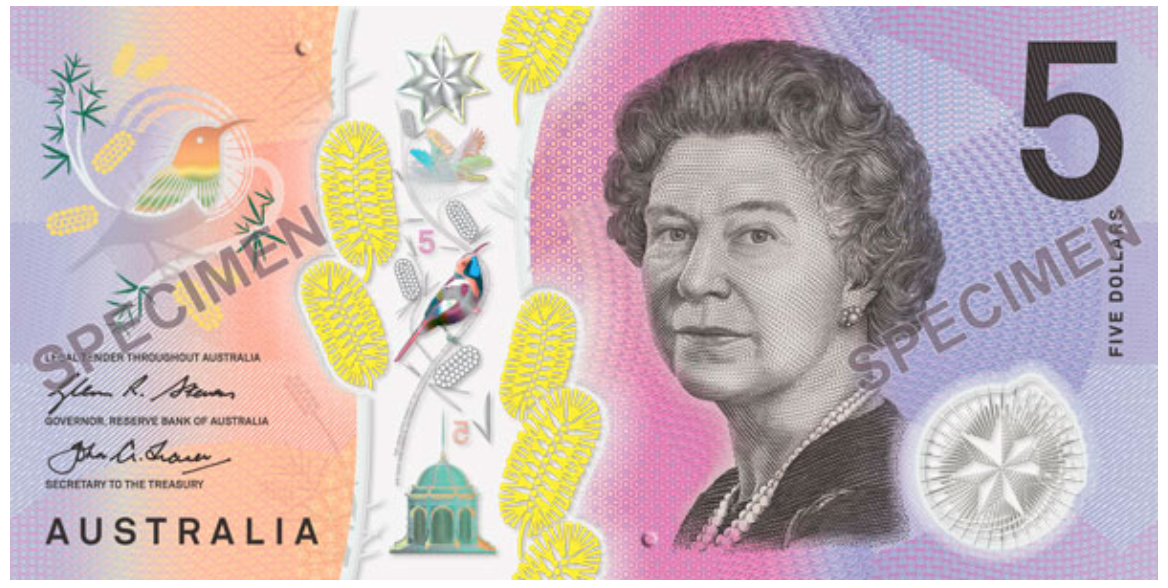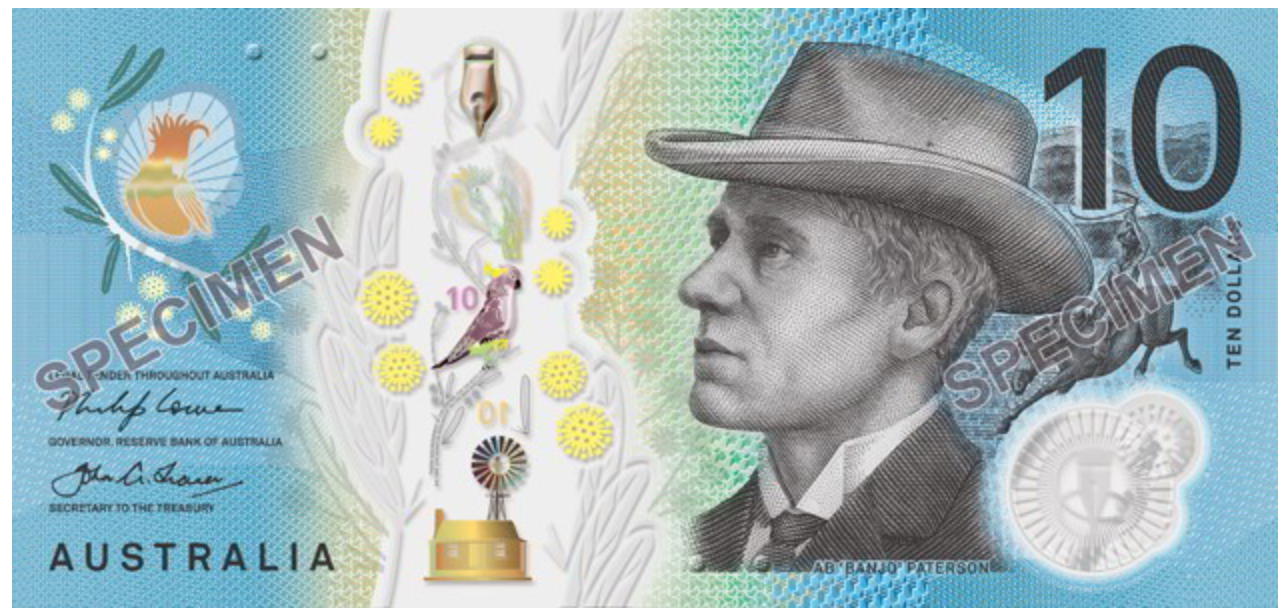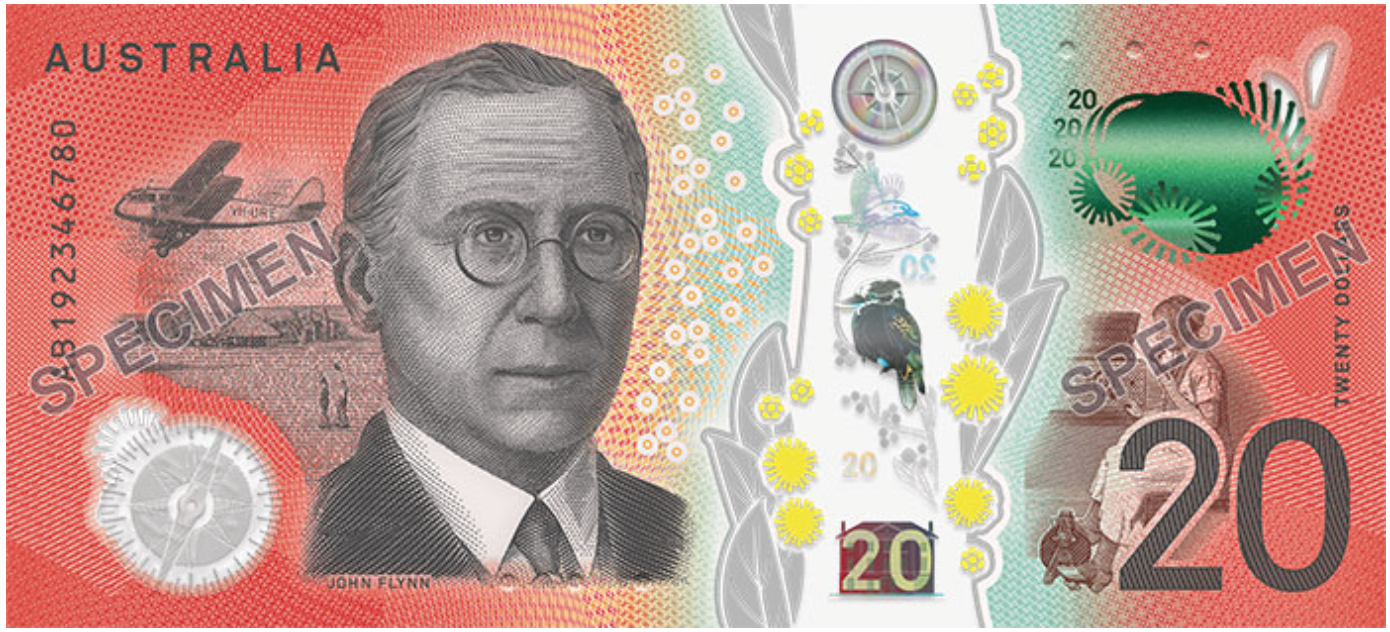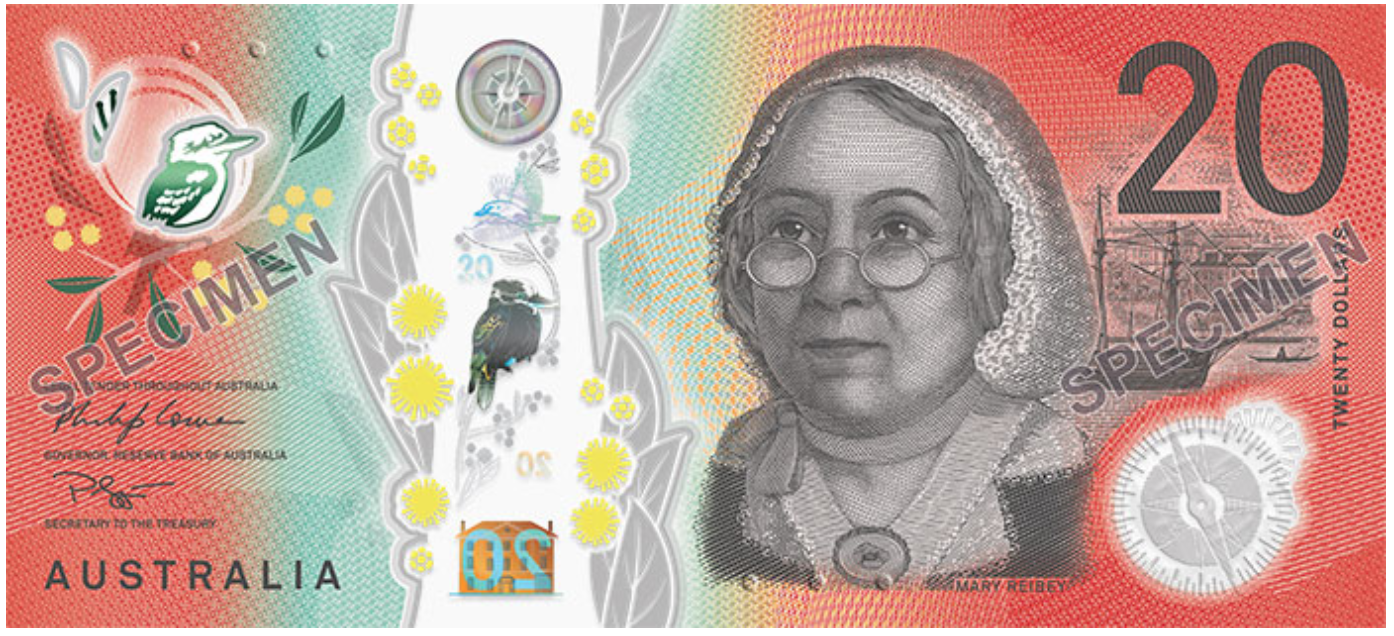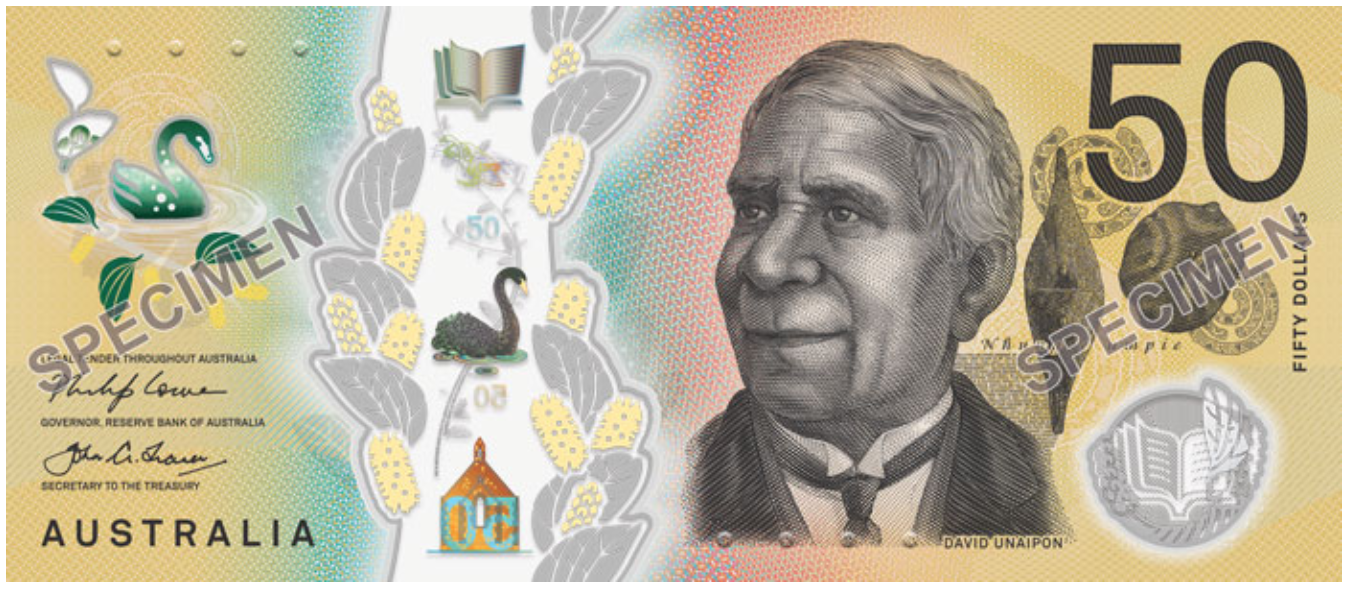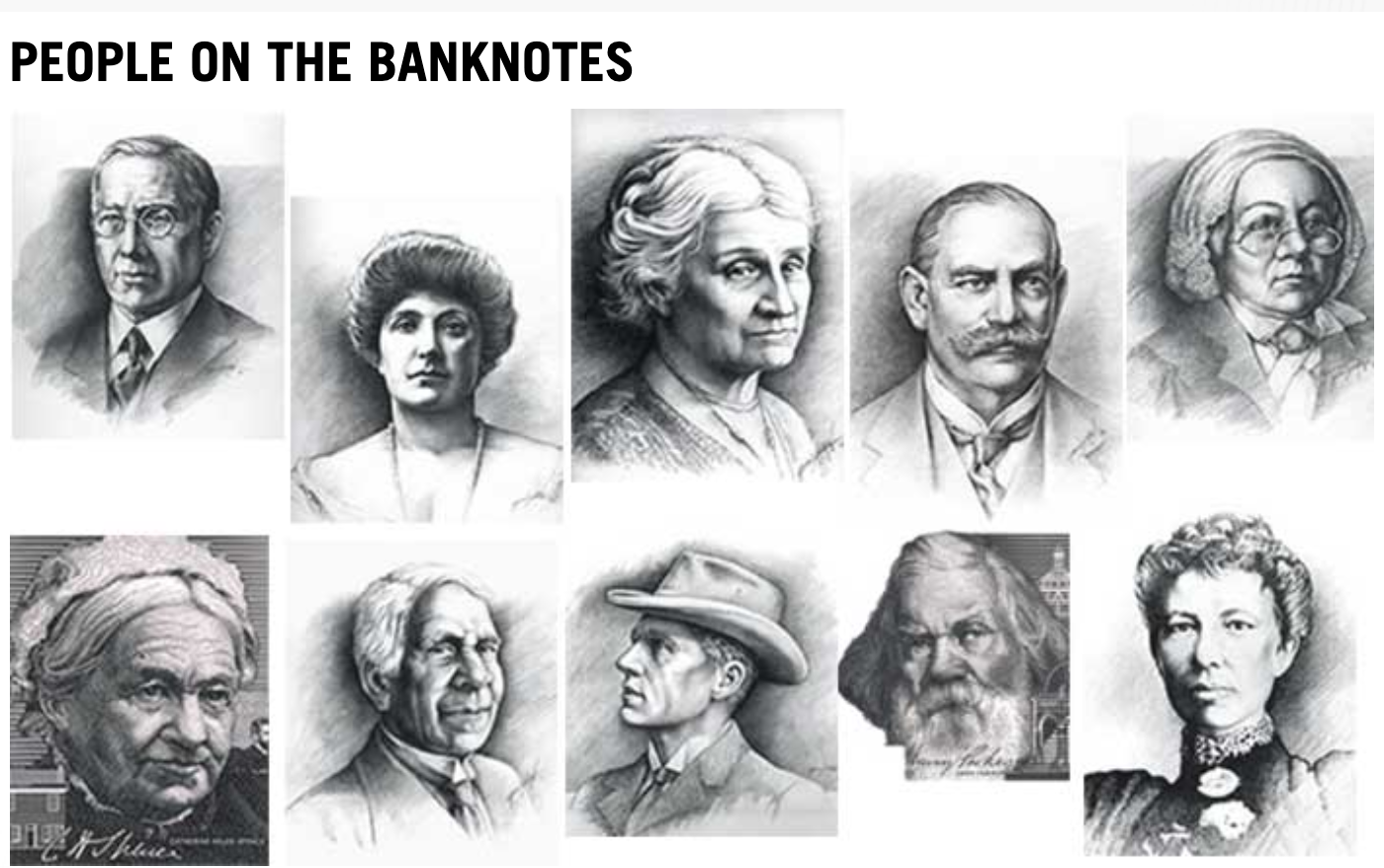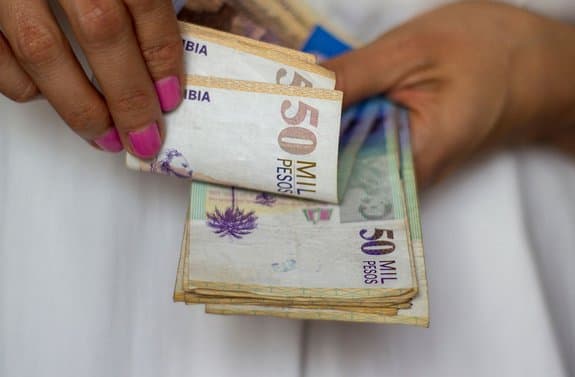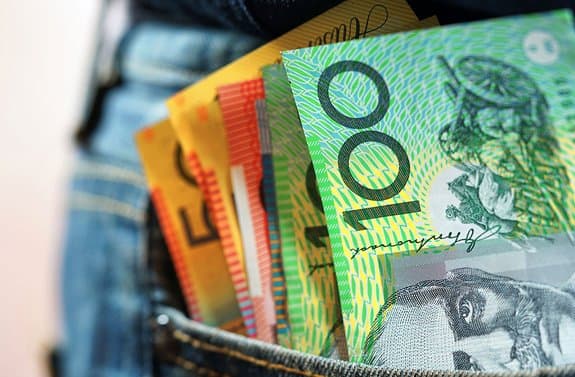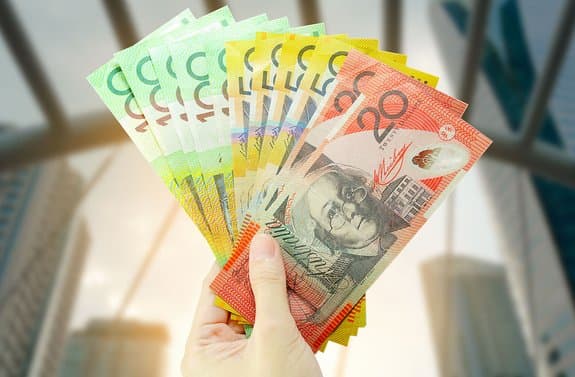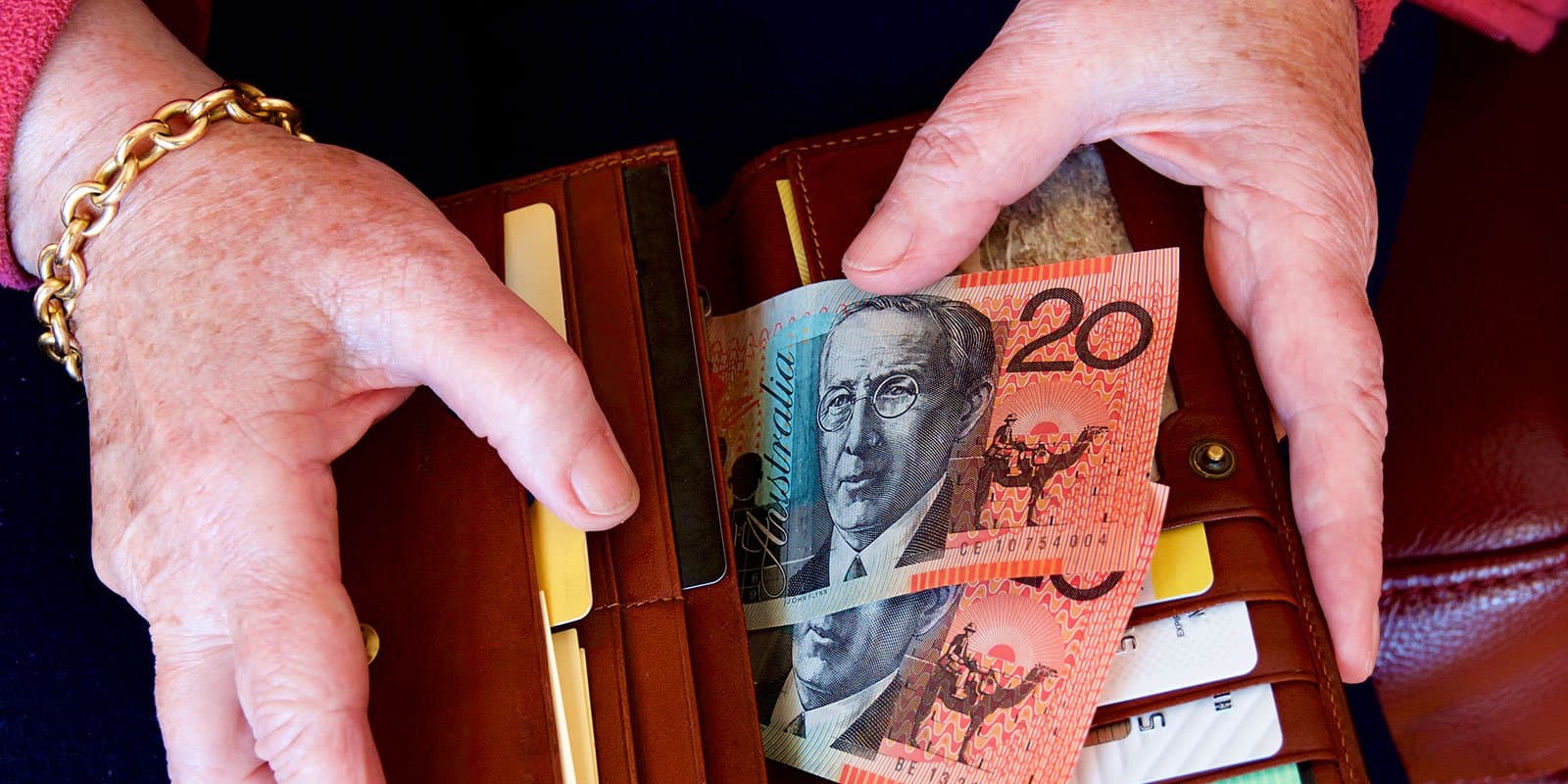
World through banknotes: Australia
The current series, dubbed the Next Generation series, are colorful, waterproof, and packed with history and wattles, a native plant. The polymer series consists of five denominations: $5, $10, $20, $50 and $100 (note: the new $20 and $100 have not yet entered circulation).
Excerpt from Reserve Bank of Australia
The first denomination in the new series, the $5 banknote, was issued on 1 September 2016. The new $10 banknote was issued into general circulation from 20 September 2017 followed by the new $50 banknote on 18 October 2018. The new $20 is expected to be issued in October 2019 and the new $100 in 2020.
A portrait of Queen Elizabeth II along with the New Parliament House (Parliament meeting place in capitol, Canberra), the Forecourt Mosaic (based on artist Michael Nelson Jagamara's painting, ‘Possum and Wallaby Dreaming’), the Federation Pavilion, Prickly Moses Wattle (native plant) and an Eastern Spinebill (native bird) appear on Australia's violet and pink 5-dollar banknote (H65mm × W130mm).
The Queen is featured on the 5-dollar banknote because as Australia is a federation, a constitutional monarchy and a parliamentary democracy, means they have a Queen, who resides in the United Kingdom and is represented in Australia by a Governor-General. Governed by the Prime Minister with a two-chamber Commonwealth Parliament, similar to the 'Westminster System'.
The building depicted in the top-to-bottom window is Federation Pavilion, which was the site of the official ceremony that marked the proclamation of the Commonwealth of Australia. The banknote is rich in depictions of Australia's governing history.
Fun Fact: Did you know that the plant that appears on the 5-dollar bill is often used for privacy hedges? How appropriate! Cash's own privacy-protecting feature are one of the many reasons for why cash matters.
Portraits of poets Dame Mary Gilmore and AB ‘Banjo’ Paterson along with illustrations of the homesteads described in the poets work, Bramble Wattle (native plant) and a Sulphur-crested Cockatoo (native bird) appear on Australia's blue 10-dollar banknote (H65mm × W137mm). The tenner entered circulation on September 20th, 2017.
The imagery is subtle and powerful, and a close look reveals excerpts from Gilmore's poem 'No Foe Shall Gather Our Harvest' and Paterson's 'The Man from Snowy Rivery' in the micro print.
The homestead used in the design of the Reversing 10 is representative of the type of homestead referenced in Gilmore and Paterson's works. The hut on the Gilmore side of the banknote references life in the Australian bushland as described in her poetry. The image of the horseman on the other side of the banknote is the designer's interpretation of a horseman from the era of Paterson’s writing.
"The new banknote provides the opportunity to tell more of the rich story behind these distinguished Australians,"
The new 20-dollar banknote is expected to enter circulation in October, 2019.
Portraits of Mary Reibey and Reverend John Flynn along with symbols of their enterprise and ingenuity appear on the "lobster" red banknote (H65mm × W144mm). On Reibey's side, symbols of her success as a convict-turned-businesswoman, including her ship Mercury and a building on George Street (central business district in Sydney). On Reverend Flynn's side of the banknote, appears an airplane and a camel, in reference to his work establishing the world's first aerial medical service, the Royal Flying Doctor Service, and the Patrol Padres, reducing outback isolation from medical services and communication. Finally, the wattle and bird of choice on this note are the Acacia Buxifolia and the Laughing Kookaburra.
Mary Reibey built substantial business interests in property and shipping operations. Having assumed responsibility for her husband's enterprises after his death in 1811 and subsequently expanding them, Reibey earned a reputation as an astute and successful businesswoman in the colony of New South Wales. In later life, she became known for her charitable work and interest in the church and education.
Reverend John Flynn pioneered the world's first aerial medical service, now known as the Royal Flying Doctor Service. Flynn was instrumental in establishing the Presbyterian Church's Australian Inland Mission, a network of nursing hostels. Keenly aware of the isolation of the people of inland Australia, he believed that a ‘mantle of safety’ could only be created through an aerial medical service and the introduction of radio communications.
Portraits of David Unaipon and Edith Cowan along with symbols from Unaipon's literary works, Cowan's signature brooch, the wattle Acacia humifusa and a Black Swan appear on Australia's gold 50-dollar banknote (H65mm × W151mm). The "pinapple" banknote entered circulation in October, 2018.
Look even closer, and you'll find excerpts from Unaipon's book Legendary Tales of the Australian Aborigines and Edith Cowan's maiden speech to Western Australian Parliament. The powerful combination of imagery and words helped earn this banknote a spot on the list of nominees for the International Banknote Society's Banknote of 2018 award.
The banknote celebrates David Unaipon, an inventor and Australia's first published Aboriginal author, and Edith Cowan, the first female member of an Australian parliament. Their work is recognized in several design elements on the banknote, including shields from Unaipon's Ngarrindjeri nation and images portraying the practices of miwi and navel cord exchange about which Unaipon wrote. The banknote also includes pictures of the gumnut brooch Cowan had made to symbolize that entry into Parliament was a ‘tough nut to crack’ for women, and the King Edward Memorial Hospital, a women’s and maternity hospital that she helped establish.
Fun Fact: In May 2019, the Reserve Bank was called out on a typo spotted on the current $50 note, ironically, of the word 'responsibility'. The central bank laughed it off and assured the public it would be corrected in future prints.
The new 100-dollar banknote is expected to enter circulation in October, 2020.
Portraits of Dame Nellie Melba (Soprano) and Sir John Monash along with symbols from Unaipon's literary works, Cowan's signature brooch, the wattle Acacia humifusa and a Black Swan appear on Australia's gold 50-dollar banknote (H65mm × W158mm). The "pineapple" banknote entered circulation in October, 2018.

